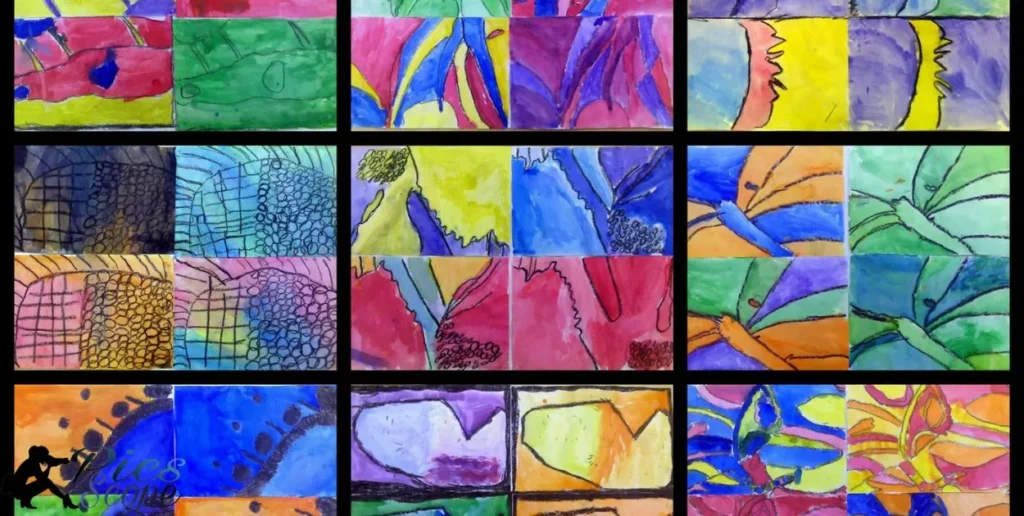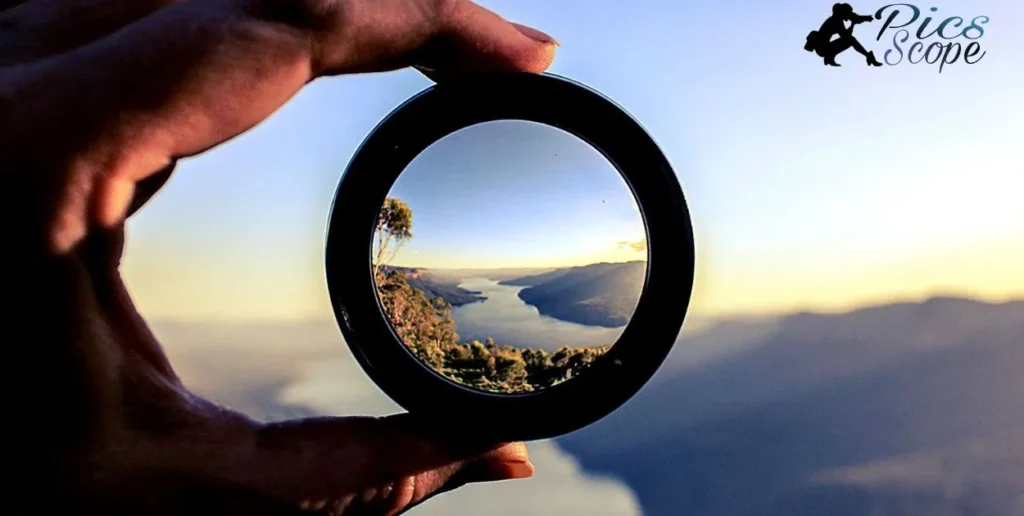Photography captures moments through a camera, freezing time to visually represent scenes and emotions. The art form evolves with technological advancements, shaping the way we engage with visual storytelling.
What Is Harmony In Photography? This question sparks curiosity, leading us to explore the concept of creating balanced and visually pleasing images. Harmony involves skillful use of colors, shapes, lines, and textures, elevating ordinary images to captivate viewers and convey a sense of beauty and order.
Explore Harmony In Photography by understanding the subtle elements that contribute to visual coherence. Experiment with techniques like balancing contrasting elements, using colors strategically, and arranging shapes intentionally to enhance the impact of visual storytelling. Mastery of harmony unlocks new dimensions of artistic expression in photography.
Understanding the Essence of Photography Harmony
Photography harmony is all about making pictures look good by using colors, shapes, and other things. You need to know the basics, like how to balance colors and arrange shapes. Imagine it like putting puzzle pieces together to make a beautiful picture.
When you take a photo, think about where things go. The rule of thirds is like a grid that helps you place objects in a good way. Also, try using lines and shapes to guide the viewer’s eyes. Photography harmony is like arranging a visual puzzle for everyone to enjoy!
What Are the Fundamental Principles of Photography Harmony?
Photography harmony is all about making pictures look balanced and pleasing to the eye. In photography, you use colors, shapes, lines, and textures to create a sense of unity.
One key principle is the rule of thirds. It’s like splitting your picture into nine parts and placing your subject along these lines. Another principle is using symmetry or asymmetry for visual appeal. By understanding these principles, you can make your photos more captivating and enjoyable to look at.
Exploring the Role of Colors in Achieving Harmony in Photography
In photography, colors play a crucial role in creating a harmonious and visually appealing image. By understanding the impact of colors, photographers can enhance the overall balance and coherence of their photos. Bold and vibrant colors can evoke strong emotions, while softer tones contribute to a more tranquil and serene atmosphere.
Experimenting with color combinations allows photographers to achieve a desired mood and atmosphere in their images. Whether it’s contrasting warm and cool tones for visual interest or using a monochromatic palette for simplicity, the strategic use of colors enhances the overall harmony of a photograph.
How Can Lines and Shapes Contribute to Photographic Harmony?

In photography, lines and shapes play a crucial role in creating a harmonious image. Straight lines can guide the viewer’s eye, leading them through the photo with a sense of order. Meanwhile, curves add a dynamic and flowing feel, contributing to a balanced composition that enhances overall harmony.
Shapes, whether simple or complex, bring structure to a photograph. Circles, squares, triangles—they all impact how viewers perceive an image. By strategically incorporating lines and shapes, photographers can achieve a harmonious balance, making their pictures visually engaging and appealing.
The Impact of Textures on Visual Coherence in Photography
Textures bring a tangible dimension to photos. In photography, textures add depth and interest to an image, creating a more immersive experience for the viewer. It’s the rough surface of a weathered wall or the smoothness of a glassy lake, textures contribute to the overall visual coherence of a photograph.
By paying attention to textures, photographers can enhance the storytelling aspect of their images. The interplay of light and shadow on different surfaces adds richness and detail, making the photo more engaging and relatable.
Why Does Composition Matter in Photography Harmony?
Photography harmony is like putting puzzle pieces together in a picture. When we talk about composition in photography harmony, we mean how elements are arranged in the photo. Imagine your photo is a story, and good composition ensures that the story is clear and interesting to the viewer.
To achieve harmony in photography composition, use the rule of thirds. Imagine breaking your photo into three equal parts horizontally and vertically, like a tic-tac-toe grid. Place important elements along these lines or at their intersections. This simple technique makes your photos more visually appealing and draws the viewer’s eye to the main subjects.
How Does the Rule of Thirds Enhance Photographic Harmony?
- The rule of thirds divides a photo into a grid of nine equal parts.
- Place important elements along the lines or intersections of the grid.
- This technique adds balance and visual interest to your photos.
- By following the rule of thirds, you guide the viewer’s focus effectively.
- Enhances photographic harmony by creating a more visually appealing composition.
Leveraging Symmetry and Asymmetry in Photography for Visual Appeal
In photography, using symmetry can make pictures more interesting. Symmetry means creating a balanced and mirrored effect in your photos. For example, if you capture a reflection in water, it adds a sense of order and visual appeal.
On the other hand, asymmetry involves intentionally creating an imbalance. This can add a dynamic and unique touch to your photos. Experimenting with both symmetry and asymmetry helps you discover different ways to make your pictures visually appealing and engaging.
By playing with these elements, photographers can enhance the overall composition of their images. Symmetry provides a sense of harmony and order, making the photo feel balanced. Asymmetry, on the other hand, introduces a bit of surprise and intrigue, keeping the viewer’s eyes moving around the frame.
Photography and the Golden Ratio: A Formula for Harmonious Compositions
In photography, the Variety Principle Of Design is like a secret formula for creating visually pleasing pictures. It’s a simple but powerful concept that helps photographers compose their shots in a balanced way.
When you apply the Variety Principle Of Design, it’s like arranging elements in a way that naturally attracts the viewer’s eye. Instead of putting your subject smack in the center, you position it slightly off-center, following the proportions of the Variety Principle Of Design
Integrating Leading Lines to Guide the Viewer’s Eye in Photographic Harmony
In photography, leading lines are like visual paths that help guide the viewer’s gaze through an image. These lines can be actual elements, like roads or fences, or implied through the arrangement of objects. By strategically placing these lines, photographers create a sense of direction, leading the viewer’s eye smoothly across the photo.
When you integrate leading lines effectively, you add a dynamic quality to your pictures. They not only create a more engaging composition but also help convey a story or draw attention to specific focal points. Experiment with different types of lines in your photography to enhance the overall harmony of your images and make them more visually appealing.
Unveiling the Secrets of Color Harmony in Photography

In photography, color harmony is like creating a balanced color dance in your pictures. Imagine a painting where colors work together, making the photo look pleasing to the eye. Using colors that complement each other or choosing a single hue can bring out emotions and make your photos visually harmonious.
Understanding the psychology of colors helps you convey specific feelings. For example, warm tones like red and yellow can evoke energy and passion, while cool tones like blue and green create a calm and tranquil mood.
What Is the Psychology of Colors in Photography?
In photography, the psychology of colors explores how different hues affect emotions and perceptions. Colors play a crucial role in conveying mood and atmosphere in a photograph. For example.
Warm tones like red and yellow can evoke feelings of warmth and energy, while cool tones like blue and green may create a sense of calm and tranquility. Understanding the psychology of colors allows photographers to intentionally use hues to communicate specific messages.
By choosing colors wisely, photographers can enhance the impact of their images and create a visual language that resonates with viewers. Whether it’s capturing the vibrancy of life or conveying a serene moment, the psychology of colors in photography is a powerful tool for shaping the emotional experience of the audience.
Creating Emotional Impact: Using Color Contrast in Photography
In photography, color contrast plays a crucial role in eliciting emotional responses from viewers. By strategically combining and contrasting colors, photographers can enhance the visual appeal of their images and evoke specific feelings. The table below highlights key color combinations and their emotional impact in photography.
| Color Combination | Emotional Impact |
| Red and Green | Excitement |
| Blue and Orange | Dynamic Energy |
| Yellow and Purple | Calm Serenity |
| Black and White | Timeless Elegance |
Rhythm In Photography
Rhythm in photography is like a visual dance. It’s about creating a flow that guides the viewer’s eye through the image. Imagine the repetition of shapes, patterns, or colors acting like beats in a song, creating a sense of movement and energy.
Photographers use rhythm to add interest and cohesion to their images. By strategically placing elements with a sense of repetition, they create a dynamic and engaging visual experience. It’s about finding the rhythm that resonates with the viewer, turning a static image into a lively and harmonious composition.
Balance In Photography
In photography, balance means arranging elements to create a visually pleasing image. Imagine a scale: if you put too much on one side, it becomes unbalanced. The goal is to distribute visual weight, like colors, shapes, or subjects, evenly.
There are two types of balance: symmetrical and asymmetrical. Symmetrical balance is like a mirror image, while asymmetrical balance is more dynamic, using different elements to achieve equilibrium. Balancing elements in your photos helps guide the viewer’s eye and makes the image more interesting and harmonious.
The Harmony of Monochromatic Photography: A Focus on a Single Hue
Monochromatic photography means using a single color tone in your pictures. You pick one color and stick to it, creating a harmonious visual effect. For example, a photo in various shades of blue or all different tones of green.
This technique allows you to emphasize the mood and simplicity of your subject. It’s an effective way to evoke emotions and direct the viewer’s attention to the essence of your photograph. Monochromatic photography is about simplicity, focus, and the powerful impact of a single color tone.
Balancing Warm and Cool Tones for Visual Harmony in Photography
In photography, visual harmony is about finding the right balance between warm and cool tones. Warm tones, like reds and yellows, evoke feelings of warmth and energy, while cool tones, such as blues and greens, create a sense of calmness and tranquility.
Combining these tones thoughtfully in a photograph adds visual interest and helps convey a specific mood or atmosphere. When capturing images, consider the lighting conditions and the natural colors present.
Experiment with the interplay of warm and cool tones to achieve a harmonious blend. Whether it’s a sunset with warm hues reflecting off a cool body of water or a portrait with contrasting clothing colors, the intentional use of warm and cool tones enhances the overall visual appeal of your photography, creating a balanced and pleasing composition.
Mastering Harmony in Photography, Techniques and Tips

In photography, mastering harmony means creating visually appealing images. Use the rule of thirds by placing key elements along imaginary lines, making your photos more balanced. Experiment with perspectives, like shooting from low angles or trying bird’s-eye views, to add interest and variety to your compositions.
To enhance harmony, consider the depth of field in your shots. Adjust your camera settings to control what’s in focus and what’s blurred. Pay attention to the weight of elements in your photos, ensuring a balanced distribution to create visual harmony.
What Is Photography Color Harmonies?
Photography color harmonies refer to the pleasing combinations of colors in an image. It’s about how colors work together to create a visually balanced and appealing composition. Understanding photography color harmonies involves grasping the basics of the color wheel.
Complementary colors, located opposite each other on the wheel, create dynamic contrasts. Analogous colors, found next to each other, offer a more harmonious and serene look. By applying these simple color principles, photographers can enhance the impact of their images and create a more engaging visual experience for viewers.
What Is A Harmonious Image?
A harmonious image is one where all the elements come together seamlessly, creating a visually pleasing and balanced composition. In such pictures, colors, shapes, and lines work in harmony, producing a sense of order and unity.
It’s like a well-orchestrated symphony, where each component contributes to the overall beauty without overpowering the others. To achieve a harmonious image, consider the placement of objects, the use of complementary colors, and the arrangement of shapes within the frame.
Simple yet thoughtful adjustments can lead to a more balanced and visually appealing photograph. In essence, a harmonious image is a result of deliberate choices made by the photographer to ensure that every element contributes cohesively to the overall aesthetic.
What Is Beauty In Harmony In Photography?
Photography beauty in harmony involves creating visually pleasing images through balance and coordination. It’s about making sure colors, shapes, and elements work together for an attractive composition.
Achieving beauty in harmony means understanding the impact of colors. Photographers choose colors that complement each other to create a pleasing visual experience. It’s about finding the right balance so that no element dominates, creating a sense of unity and coherence in the photograph.
What Is An Example Of Unity In Photography?

In photography, unity refers to the cohesive and harmonious arrangement of elements in an image. For example, a photograph showcasing a serene landscape with consistent color tones, such as a calming sunset, demonstrates unity.
The blending of similar hues and the smooth transition between elements create a visually pleasing and unified composition. Another example of unity in photography can be found in a close-up shot of a flower garden.
When the photographer captures flowers of various colors, yet maintains a balanced distribution and avoids chaotic arrangements, it exemplifies unity. The deliberate composition ensures that the diverse elements work together cohesively, resulting in a harmonious and aesthetically pleasing photograph.
What Is Harmony In Photography Examples
In photography, harmony means making a picture look balanced and pleasing. Let’s look at some examples to understand it better. Imagine a photo with vibrant colors that complement each other, creating a sense of unity and balance. This color harmony enhances the overall appeal of the image, making it visually pleasing.
Another example of harmony in photography is when you have different elements, like shapes and lines, working together smoothly. For instance, consider a photo with leading lines guiding your eyes through the frame.
These lines create a harmonious flow, adding a sense of order and balance to the composition. In both cases, harmony in photography brings together various elements to create visually striking and well-balanced images.
FAQ’s
What does Variety mean in photography?
Variety in photography refers to the inclusion of diverse elements, such as colors, shapes, and textures, to add interest and richness to an image.
How is Unity achieved in photography?
Unity in photography is achieved by ensuring that all elements in an image work together harmoniously, creating a cohesive and visually pleasing composition.
What does Emphasis entail in photography?
Emphasis in photography involves highlighting a specific element or subject to draw the viewer’s attention and create a focal point within the image.
How is Proximity relevant in photography?
Proximity in photography relates to the arrangement and closeness of elements within the frame, influencing how they interact and contribute to the overall visual harmony.
How does Harmony differ from Unity in photography?
While unity is about creating a cohesive whole, harmony in photography specifically emphasizes a balanced and aesthetically pleasing arrangement of elements within an image.
Conclusion
Harmony in Photography is the key to transforming ordinary pictures into captivating visual stories. By understanding how colors, shapes, lines, and textures work together, photographers can create balanced and aesthetically pleasing compositions.
Achieving harmony in photography allows for a deeper connection with viewers, conveying emotions and narratives with greater impact. As photographers continue to explore the nuances of Harmony in Photography, they unlock a realm of creative possibilities.
The deliberate use of elements and techniques discussed fosters a sense of order and beauty in visual storytelling. Through the strategic arrangement of colors or the skillful incorporation of shapes, mastering harmony elevates the art of photography, leaving a lasting impression on those who engage with the captivating images produced.







